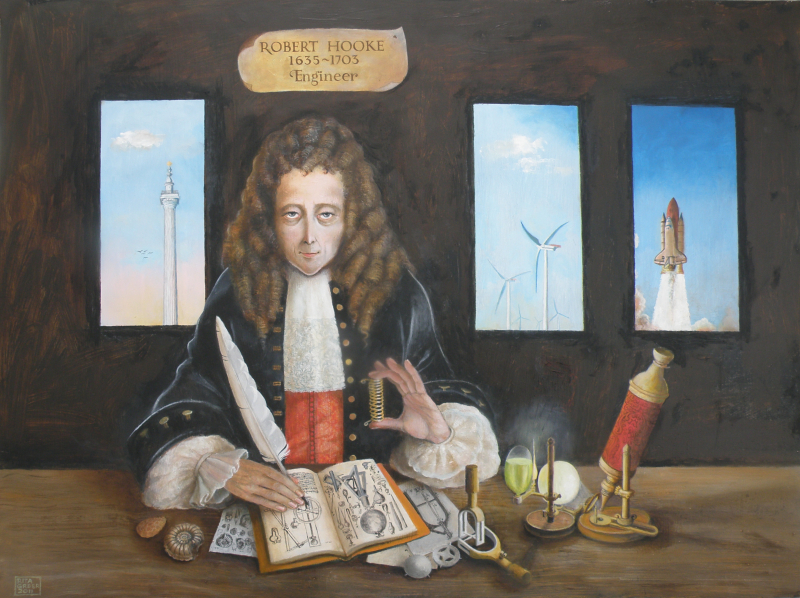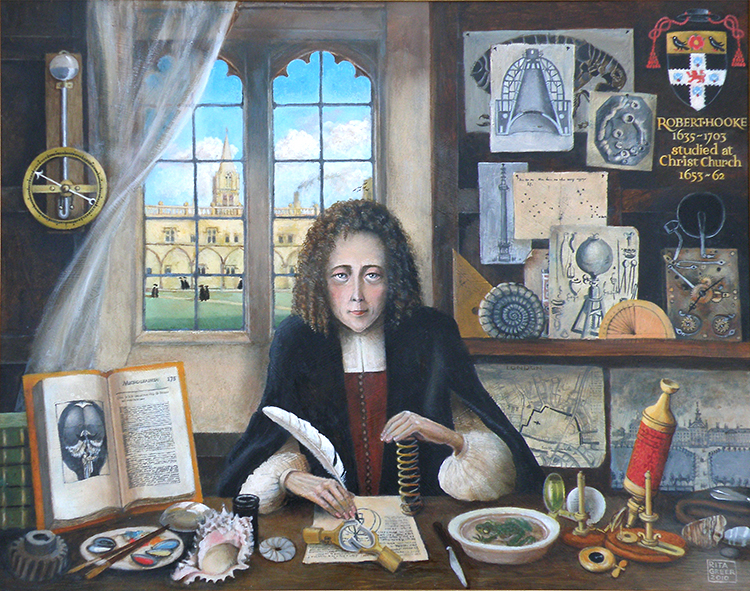Despite his poor health, Robert Hooke showed a talent for science from an early age
Since he was a child, Robert's original concepts used both his mechanical and observational abilities, which is one of the interesting facts about Robert Hooke. Around him, he took note of the surroundings' vegetation, fauna, farms, cliffs, sea, and beaches. He made various items out of wood, ranging from a model of a fully equipped ship with operating weapons to a functional clock since he was attracted by mechanical toys and clocks. Waller dates Hooke's conviction in mechanics, and particularly his idea that nature was a complex machine, from the time he allowed his imagination and his skills to run wild at around age ten, in the Preface to Hooke's Posthumous Works, which was published in 1705.
When in Oxford, Hooke studied astronomy under Seth Ward and dazzled Wilkins with his mechanical prowess. A copy of Wilkins' book Mathematical Magick, or the miracles that may be worked by mechanical geometry, which he had written five years before Hooke arrived at Oxford, was given to him. This book inspired Hooke to pursue his goal of creating a flying machine, and he carried out pulley experimentation at the Wadham College grounds. Hooke helped Willis with his dissection experiments for a period. He collaborated with the leading English scientists of the day and benefited significantly from learning a variety of fields.
At the age of 20, Hooke moved a step closer to becoming a scientist in 1655. His proficiency with mechanical equipment had advanced to the point that he was able to gain employment in Oxford as Robert Boyle's assistant, who was one of the fathers of modern chemistry. Boyle used apparatus that Hooke mostly conceived and built to uncover Boyle's Law throughout their seven-year collaboration. The anchor escapement, which Hooke created about 1657, significantly enhanced the pendulum clock. This gear advanced the clock's hands while providing a tiny push to each pendulum swing to keep it from running out of energy. The balancing spring, which is essential for precise timekeeping in pocket watches, was created by Hooke around 1660, and he even manufactured one for himself. Since a pendulum cannot be employed in a pocket watch, an alternative method of keeping track of time is required. Time could be accurately preserved by using Hooke's balancing spring, which was connected to a balance wheel and created a regular oscillation. Over ten years later, Christiaan Huygens independently developed the balancing spring. Hooke's Law, which asserts that the tension force in a spring rises in direct proportion to the length it is stretched to, was discovered in 1660.












